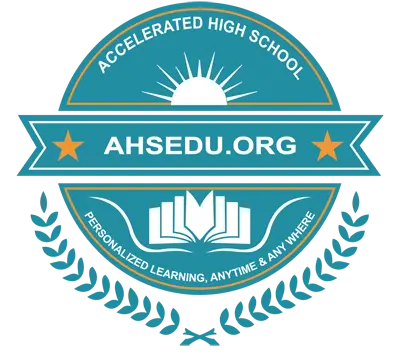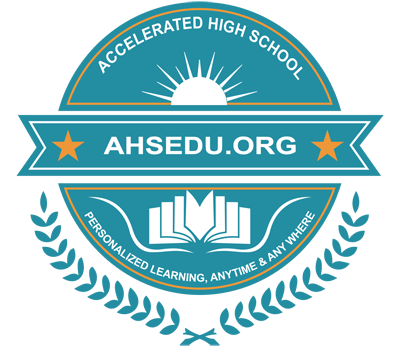
General Science-IV
General Science for Grade 4 on AHSEdu.org covers Earth sciences, forces, and ecosystems, promoting hands-on exploration. It strengthens critical thinking about the natural world.
Course Topic
A1_Laws of Motion
A2_Effects of Forces on Objects
A3_Natural Forces
A4_Directions of Forces
A5_Balanced and Unbalanced Forces
A6_Balanced and Unbalanced Forces Affecting Motion
A7_Mass Affecting Force and Acceleration
A8_Altitude and Wavelength of Waves
B1_Electricity and Its Sources
B2_Conductors, Insulators and Circuits
B3_Static Electricity and Charged Objects
B4_Magnetic and Non-Magnetic Objects
B5_Magnetism and Its Applications
B6_Strengths of Magnetic Forces
C1_Energy Transformation
C2_Forms of Energy
C3_Heat Transfer Mechanisms
C4_Conductors and Insulators
D1_Introduction To Waves
D2_Frequency and Amplitude
D3_Reflection and Refraction
D4_How Sound and Light Travel
E1_Living and Non-Living Things
E2_Plants and Animals
E3_Vertebrates and Invertebrates
E4_Classification of Vertebrates
E5_Use Evidence to Classify Vertebrates
E7_Five Kingdoms
F1_Common and Scientific Names
F2_Origins of Scientific Names
G1_Parts of Plants
G2_Fruits and Vegetables as Plant Parts
G3_How do Plants make Food?
G4_Flower Parts and Their Functions
G5_Life Cycle of Flowering Plant
G6_Conifer Life Cycle
G7_Flowering and Non-flowering Plants
G8_Comparing a Monocot and a Dicot
H1_Animal Life Cycle
H2_Human Organs and Their Functions
H3_Circulation and Respiration
H4_Digestion
H5_Removing Waste
H6_Perception and Motion
I1_Introduction To Adaptations
I2_How Organisms Adapt To Their Environments
I3_Survival Strategies in Different Habitats
I4_Human Adaptations
J1_What Affects Traits?
J2_Match Offspring To Parents
J3_Inherited and Acquired Traits
J4_Inherited and Acquired Traits: Use Evidence To Support a Statement
J5_Plant Pedigree Chart
J6_Animal Pedigree Chart
K1_Functions of Plant Cell Parts
K2_Functions of Animal Cell Parts
K3_Plant Cell Diagram
K4_Animal Cell Diagram
K5_Plant Vs Animal Cell
L1_Ecosystems and Their Components
L2_Biotic and Abiotic Factors
L3_Biodiversity and It's Importance
L4_Role of Living Organisms in an Ecosystem
L5_How does Matter Move in FoodChains?
L6_Food Webs
L7_Human Impacts on Ecosystem
M1_How can a Community Protect Sea Turtles?
M2_Evaluate Natural Energy Sources
M3_Conservation of Natural Resources
M4_Water – Importance, Sources, Uses, Saving
M5_Deforestation
N1_Erosion
N2_Identify Minerals Using Properties
N3_Identify Rocks Using Properties
N4_How do Sedimentary Rocks Form?
N5_Igneous, Sedimentary and Metamorphic Rocks
N6_How do Rock Layers Form?
O1_Introduction To Fossils
O2_Identify and Classify Fossils
O3_Compare Fossils To Modern Organisms
O4_Compare Ancient and Modern Organisms
O5_Evidence From Fossils in Rock Layers
P1_Read a Thermometer
P2_Compare Temperatures on Thermometers
P3_Weather Vs Climate
P4_Weather and Climate Around the World
P5_Weather or Climate? Cite Text
P6_Use Climate Data to Make Predictions
P7_Use Data to Describe Climates
P9_Relationship Between Geographical Location and Climate
Q1_Earth's Land Features
Q3_Water on Earth
R1_The Water Cycle
R2_Importance of Water
R3_Water Conservation Practices
R4_Human Impact on Water Cycle
R5_Earthquakes
R6_Volcanic Eruptions
S1_Planets In Our Solar System
S2_Earth's Position
S3_Phases of Moon
S4_Stars and Galaxies
S5_Earth's Rotation and Orbit
S6_Brightness of Sun and Other Stars
T1_Customary Units of Distance
T2_Metric Units of Distance
T3_Customary Units of Mass
T4_Metric Units of Mass
T5_Customary Units of Volume
T6_Metric Units of Volume
T7_Abbreviate Time and Length Units
T8_Abbreviate Mass and Volume Units
U1_Teeth
U2_Bones
U3_Muscles and Joints
U4_Skeletal System
U5_Mascular System
V1_Human Health
V2_Balanced Diet and Its Components
V3_Personal Hygiene and Sanitation
V4_Diseases
W1_The First Aid Box
W2_Measuring Body Temperature Using First Aid Box
W3_Checking Blood Pressure
X1_Reversible and Irreversible Changes
Y1_Technology in Everyday Life







